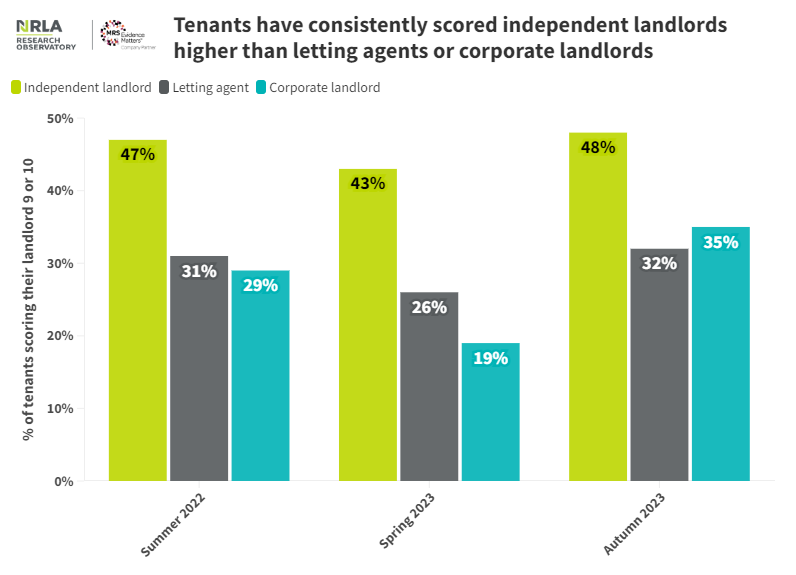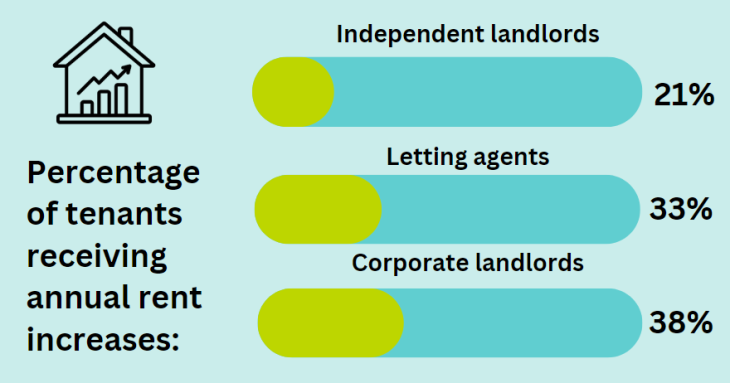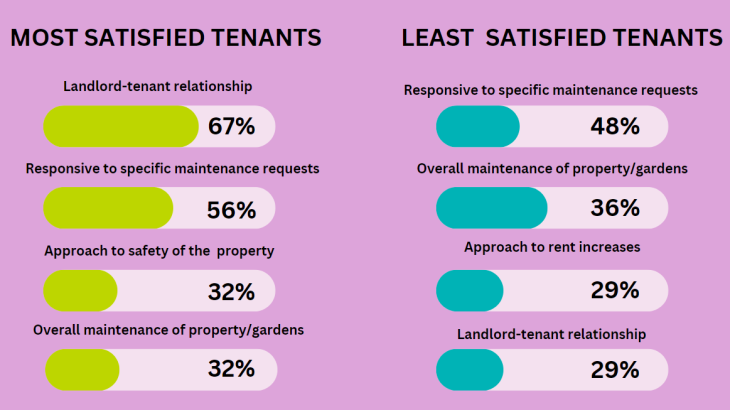

Still winning - Why tenants love independent landlords
Introduction
Twice a year, the NRLA conducts a tenant survey, gathering data about the Private Rented Sector (PRS) and providing insight into landlord-tenant relationships.
The survey was conducted in August and September of 2023, and gathered responses from over 2,000 rent paying tenants across England and Wales. All those surveyed were tenants privately renting and whilst a handful were lodgers, the majority rented from one of three groups:
- An independent landlord (or couple)
- The corporate or company sector
- A letting or management agency (with whom the tenant dealt for all property-related issues)
The survey was drafted by the NRLA whilst an independent market research company (Dynata) undertook the research.
The overall satisfaction of tenants is high....
Tenants were asked to rate their current landlord on a scale of 0 – 10, with 0 being "Not at all likely to recommend as a landlord" and 10 being "Highly likely to recommend as a landlord". This question has been a consistent feature in the last two tenant surveys conducted by the NRLA. The most recent results indicate:
- Across England and Wales, 43% of ALL tenants surveyed scored their landlord either 9 or 10*.
- Only 7% of tenants gave a score of 0, 1 or 2 across England and Wales.
These figures suggest a majority of tenants are satisfied with their private landlord.
*This figure rises to 58% for scores of 8, 9 or 10.
..but satisfaction with independent landlords is higher still!
Data from previous tenant surveys have shown that when results are split by landlord type - independent landlord, corporate landlord and letting agent – independent landlords consistently achieve higher satisfaction levels.
Will the most recent tenant survey maintain this advantage held by independent landlords?
Chart 1: Proportion of tenants giving their landlords a “satisfaction score” of 9 or 10 out of ten

Chart 1 confirms that for the third consecutive survey, tenants consistently gave independent landlords the highest score.
- In the latest survey, 65% of tenants gave their independent landlords the highest satisfaction scores (8-10).
- This is compared to 46% for corporate landlords and 49% for letting agents.
Across the last three tenant surveys conducted by the NRLA, tenants have communicated a clear and consistent message:
Independent landlords are given satisfaction scores higher than those achieved by letting agents or the corporate sector.
Are tenants receiving rent increases?
The survey asked tenants about how often, if at all, their landlord increases the rent*. Analysis of the results reveal a link between satisfaction ratings and the frequency of rent increases.
- Tenants who score their landlord the highest ratings (9 or 10) tend to experience less frequent rent increases.
- They are also more likely to never have been issued with an increase at all.
Given the high scores afforded to independent landlords, are tenants renting from this group more likely to experience more stable and longer lasting rent levels?
(*tenants who had been at their current address for more than one year were asked this question)
Figure 1: Tenants receiving annual rent increases

Figure 1 reveals that tenants renting from independent landlords are the least likely to have their rent increased on an annual basis.
Delving deeper into the results, independent landlords were found to be the most likely to have never issued a rent increase:
Figure 2: Tenants who have never received a rent increase from their current landlord
What makes tenants happy with their landlord?
Understanding common trends and correlations in tenants' experiences can shed light on the essential elements that constitute a positive landlord-tenant relationship. All tenants were asked to indicate the reasons they awarded their landlords the score they did.
Here the analysis uses the following classification:
- Most satisfied – a rating of 9 or 10
- Least satisfied – a rating of 6 or below
Figure 3: Reasons behind the scores given by ALL tenants in the PRS

Key metrics driving satisfaction
Landlord-tenant relationship
The general landlord-tenant relationship stands out as the main driver of tenant satisfaction, with the greatest percentage point difference between the most satisfied and least satisfied tenants at 39%:
- For those most satisfied 67% of tenants felt this relationship was a pivotal influence.
- Conversely, 29% in the lowest bracket also acknowledged its impact on their perception.
This suggests that the overall satisfaction awarded by a tenant is at least correlated to them having a positive relationship with their landlord.
Looking again at the experience among renters from independent landlords, nearly three-quarters - 74% - of those classified as most satisfied pointed to the landlord-tenant relationship as the primary reason for their high satisfaction levels.
Maintenance and responsiveness
How a landlord approaches maintenance issues also emerged as a key factor among both groups of tenant. For the most satisfied tenants, the positive way landlords resolved specific maintenance requests was the second most cited factor, behind only the landlord-tenant relationship (see above).
For the least satisfied, maintenance emerged as a key concern. Almost half in this group stated their landlord was not responsive to specific maintenance requests.
Safety of property
The most satisfied tenants appreciated their landlord's concern about the safety of their property.
- Nearly a third of the most satisfied tenants – 32% - considered their landlord’s approach to safety as a factor in in their positive assessment.
Rent increases
As shown above, how landlords approach rent increases plays an important role - but not the most important role - in influencing satisfaction levels.
- Among the least satisfied, 29% cited the rent increase policy of their landlord as a key reason for their low scores.
- This is identical to the proportion of the most satisfied tenant group citing rent increase policy as the most important factor.
Summary
Independent landlords are most likely to boast high levels of tenant satisfaction
The findings reveal strong landlord-tenant relations across the board, with tenants broadly satisfied with their landlords. This is most true for tenants who rent from an independent landlord, a finding which has now been confirmed across multiple surveys, highlighting a clear pattern.
Tenants with independent landlords experience fewer rent increases - but this is far from the main reason why independent landlords are scored so highly. Tenants place great value on the quality of the relationship they have with the landlord. Results indicate that tenants welcome the personal relationship they can strike up with their landlord, reflecting a preference towards more personalised, attentive management practices.
Key drivers of high tenant satisfaction
The findings show that high tenant satisfaction is driven by a variety of factors. Tenants value responsive communication, prompt maintenance and a sense of safety and security in their homes. When these are coupled with a personal and high quality landlord-tenant relationship, then overall satisfaction levels are driven upwards.
Independent landlords often excel in these areas due to their direct involvement in property management and the resulting relationship with their tenants.
Final comments
Findings on tenant satisfaction in this latest tenant survey highlights what tenants consider to be important to their wellbeing and satisfaction with their landlord and their accommodation.
In doing so they have reaffirmed a clear consistent message - telling a story of strong-landlord tenant relationships. This is especially true for independent landlords.
